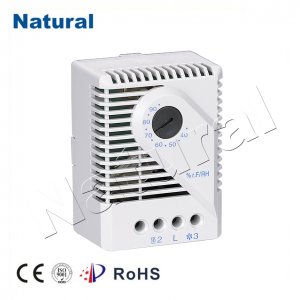Introduction

In the realm of modern engineering, technological advancements have bestowed upon us a myriad of devices that cater to our evolving needs. One such innovation is the mechanical temperature switch, a remarkable creation that plays a pivotal role in various industries. This article delves into the intricate workings and diverse applications of the mechanical temperature switch. The Basics of the Mechanical Temperature Switch The mechanical temperature switch, a marvel of simplicity and functionality, is an essential component in controlling temperature-dependent processes. It operates based on the fundamental principle of thermal expansion. A typical mechanical temperature switch comprises a bimetallic strip, which consists of two distinct metals with different thermal expansion rates, bonded together. When subjected to temperature changes, this strip bends due to the varying expansion rates, ultimately triggering a mechanical response. Working Principle The operation of the mechanical temperature switch hinges on the unique properties of the bimetallic strip. As temperature increases, one metal expands faster than the other, causing the strip to bend toward the metal with the lower coefficient of expansion. This bending action sets off a chain reaction that activates the switch, thereby completing or interrupting an electrical circuit. Conversely, as the temperature decreases, the bimetallic strip returns to its original state, restoring the switch to its initial position. Applications Across Industries The mechanical temperature switch finds an array of applications across diverse industries. In the automotive sector, these switches are employed to regulate engine temperatures, preventing overheating and ensuring optimal performance. Similarly, in household appliances like thermostats and ovens, mechanical temperature switches guarantee safe and controlled heating processes. The industrial arena benefits significantly from this innovation as well. Mechanical temperature switches play a crucial role in manufacturing processes, where precise temperature control is imperative. They are also utilized in HVAC systems, monitoring and adjusting air and water temperatures to maintain comfortable living and working environments. Advantages and Limitations The mechanical temperature switch boasts several advantages, notably its simplicity, reliability, and cost-effectiveness. Its mechanical nature renders it less susceptible to electrical malfunctions, making it a robust choice for critical applications. Furthermore, its straightforward design allows for easy maintenance and replacement. However, it is essential to acknowledge the limitations of mechanical temperature switches. They are generally less precise than their electronic counterparts and may exhibit a certain degree of hysteresis – a lag in the switch’s response time as temperature changes. This limitation might restrict their application in scenarios requiring extremely accurate temperature control. Conclusion In the grand tapestry of modern engineering marvels, the mechanical temperature switch stands as a testament to the beauty of simplicity in design and functionality. Its ingenious utilization of thermal expansion principles enables it to play a pivotal role across industries, from automotive to manufacturing and beyond. While it may have its limitations, the mechanical temperature switch continues to be an indispensable tool, embodying the delicate balance between innovation and practicality.